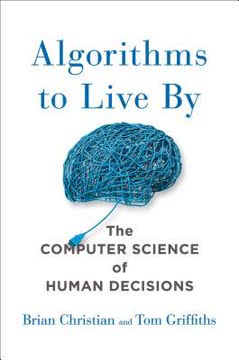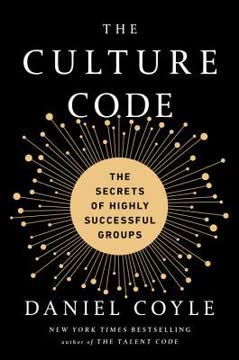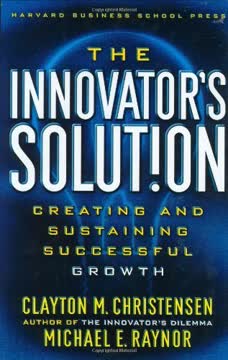Key Takeaways
1. Schools struggle to customize learning despite individual differences
Schools need a new system.
Interdependent architecture. Schools currently have a highly interdependent architecture, with temporal, lateral, physical, and hierarchical interdependencies. This structure makes it difficult and expensive to customize learning for individual students.
Standardization vs. customization. The current system is designed for standardization, not customization. This approach conflicts with the reality that students have different types of intelligence, learning styles, and paces. The system's interdependence forces schools to standardize teaching and testing methods, even though this doesn't serve all students well.
Need for modularity. To achieve customization, schools need to move towards a modular architecture. This would allow for student-centric learning, where education can be tailored to each student's unique needs and learning style. Modularity would enable schools to customize economically, breaking away from the current "factory model" of education.
2. Disruptive innovation theory explains education's resistance to change
Disruption is a positive force.
Disruption defined. Disruptive innovation is a process by which a product or service initially takes root in simple applications at the bottom of a market, then relentlessly moves upmarket, eventually displacing established competitors. In education, this theory explains why schools have struggled to improve despite significant efforts.
Jobs assigned to schools. Society has assigned schools four distinct jobs over time:
- Preserve democracy and inculcate democratic values
- Provide something for every student
- Keep America competitive
- Eliminate poverty
Shifting goalposts. As society has changed these jobs, it has effectively moved the goalposts for schools. Each new job has required schools to adapt and improve in different ways, often conflicting with their existing structures and methods. Despite these challenges, schools have shown remarkable resilience in adapting to new demands.
3. Computer-based learning can revolutionize education through disruption
Disruption is often a two-stage process.
Nonconsumption opportunities. Computer-based learning is taking root in areas of nonconsumption, where the alternative is nothing at all. These include:
- Advanced Placement courses
- Small, rural, and urban schools with limited course offerings
- Credit recovery for students who must retake courses
- Home-schooled students
- High school dropouts
- Students needing special tutoring
- Prekindergartners
Disruptive implementation. To successfully implement computer-based learning, schools should:
- Target areas of nonconsumption
- Allow it to compete against nonconsumption
- Implement it in places where there are no teachers to teach
Predictable pace of substitution. Data suggests that by 2019, about 50% of high school courses will be delivered online. This transition will be driven by:
- Continuous improvement of online learning
- Ability to select learning pathways that fit individual needs
- Looming teacher shortage
- Decreasing costs as the market scales up
4. Student-centric technology will emerge as the next phase of disruption
Facilitated networks, not VAP businesses, will be the business models of distribution.
Two-stage disruption. The first stage is computer-based or online learning, which is already underway. The second stage will be student-centric technology, which will make learning affordable, convenient, and simple for many more students to learn in ways that are customized for them.
Technological platform. Platforms like Intuit's QuickBase will enable nonprogrammers to build sophisticated software for specific learning purposes. This will allow students, parents, and teachers to create tools that help different types of learners master topics they would otherwise struggle with.
User-generated content. The best of these tools will spread quickly through facilitated networks, where participants worldwide can instruct and learn from one another. This approach will harness the innovative energies of a much larger group of insightful people than is possible in today's value-adding process (VAP) business models.
5. Early childhood development profoundly impacts future learning potential
The first three years are unique in the lives of humans because infants are so utterly dependent on adults for all their nurture and language.
Critical early years. A significant portion of a person's intellectual capacity is determined in the first 36 months of life. Research shows a strong correlation between the number of words spoken to children in their early years and their cognitive achievements later in life.
Language dancing. The most impactful conversations with infants are those involving "language dancing" - sophisticated, face-to-face, adult conversations. This type of interaction helps develop auditory processing skills, which are crucial for future reading abilities.
Neuroscience connection. These early interactions create and strengthen synaptic pathways in the brain, making subsequent patterns of thought easier, faster, and more automatic. Children who experience more "language dancing" have a significant cognitive advantage compared to those who don't.
6. Students are motivated by feeling successful and having fun with friends
Motivation operates through a different causal mechanism from the one most of us have assumed traditionally.
Core student jobs. Most students try to do two core jobs every day:
- Feel successful and make progress
- Have fun with friends
School as a competitor. Schools compete with other activities (e.g., gang membership, video games, dropping out) as something students can hire to do these jobs. Often, schools fare poorly in this competition.
Integrating success and education. To improve motivation, schools need to integrate experiences that help students feel successful every day with the delivery of curriculum. Examples include:
- Project-based learning strategies
- Computer-based learning with built-in achievement milestones
- Customizing content delivery to each student's "just above" level
7. Education research must shift to prescriptive, circumstance-based models
The value of a theory is assessed by its predictive power.
Current research limitations. Most education research is trapped in the descriptive stage, providing correlations but not causality. This leads to statements about what works on average, but doesn't help predict outcomes in specific situations.
Prescriptive understanding. To improve, education research needs to move towards prescriptive bodies of understanding. This involves:
- Identifying causal mechanisms
- Categorizing different circumstances students, teachers, or administrators might face
- Developing circumstance-contingent "if-then" statements
Improved predictability. This approach would allow educators to predict what actions will lead to desired results in specific situations, rather than relying on average tendencies that may not apply in all cases.
8. Organizational structure determines a school's ability to innovate
The structure of the organization now determined the architecture of its products.
Types of innovation problems. Schools face four categories of innovation problems, each requiring a different organizational structure:
- Functional (departmental) problems
- Lightweight team problems
- Heavyweight team problems
- Autonomous unit problems
Heavyweight teams for architectural change. When significant or breakthrough improvement is required, schools need to create heavyweight teams. These teams can transcend departmental boundaries and interact in new ways to rethink the basic architecture of education.
Chartered and pilot schools. These can serve as heavyweight teams, allowing for experimentation with new educational architectures. Examples include:
- Academic architectural innovations (e.g., project-based learning schools like High Tech High)
- Behavioral architectural innovations (e.g., KIPP schools)
District role. School districts should view chartered schools as R&D laboratories, helping to match school typologies with students in different circumstances. This approach can lead to a more diverse and effective educational ecosystem.
Last updated:
FAQ
What's Disrupting Class about?
- Focus on Education Reform: Disrupting Class by Clayton M. Christensen explores how disruptive innovation can transform K-12 education by personalizing learning for each student.
- Disruptive Innovation Theory: The book applies Christensen's theory, explaining how simpler, more affordable solutions can disrupt established markets, including education.
- Challenges in Current Systems: It highlights the struggles schools face in adapting to new demands, such as improving student achievement and integrating technology effectively.
Why should I read Disrupting Class?
- Insightful Perspectives: The book offers a fresh perspective on education reform, making it essential for educators, policymakers, and anyone interested in the future of learning.
- Practical Solutions: It provides actionable strategies for implementing disruptive innovations in schools, focusing on technology's role in personalized learning.
- Relevance to Current Issues: The book addresses pressing concerns about student engagement and achievement in a rapidly changing world.
What are the key takeaways of Disrupting Class?
- Personalized Learning is Essential: The authors argue for a modular approach to education that allows customization based on individual learning styles.
- Technology as a Disruptive Force: The book emphasizes technology's potential to disrupt traditional educational models by providing more accessible and engaging learning experiences.
- Need for Systemic Change: It calls for a fundamental rethinking of how schools operate, moving away from standardized, one-size-fits-all approaches.
How does Disrupting Class define disruptive innovation in education?
- Definition of Disruptive Innovation: It refers to a process where a smaller company with fewer resources successfully challenges established businesses, applied here to education.
- Application in Schools: The book illustrates how disruptive innovations can create new markets for education, particularly in areas where traditional schooling fails.
- Impact on Traditional Models: Disruptive innovations often start by serving nonconsumers and can eventually replace traditional educational methods.
How do the authors suggest schools can implement technology effectively?
- Focus on Nonconsumption: Schools should target areas where students currently lack access to certain courses or resources.
- Incremental Adoption: Gradually integrate technology into curricula, starting with less critical subjects to allow for experimentation.
- Support for Teachers: Provide necessary training and resources for teachers to effectively use technology in personalized learning strategies.
What role do teachers play in a student-centric learning environment according to Disrupting Class?
- Learning Coaches: Teachers transition from being the primary source of knowledge to becoming learning coaches who guide and support students.
- Facilitators of Technology: They need to become proficient in using technology to enhance learning experiences.
- Mentors and Motivators: Teachers play a crucial role in motivating students and fostering a positive learning environment.
What are the challenges schools face in adopting disruptive innovations according to Disrupting Class?
- Interdependent Structures: Schools often have interdependent architectures that resist change, leading to standardization.
- Cramming Technology: Many schools have crammed technology into existing frameworks without fundamentally changing education delivery.
- Resistance to Change: There is often resistance from educators and administrators to adopt new methods, requiring a cultural shift to embrace innovation.
How does Disrupting Class address the issue of student motivation?
- Intrinsic vs. Extrinsic Motivation: The book highlights the need to foster intrinsic motivation for student engagement.
- Jobs to Be Done Framework: It suggests understanding students' motivations to design more effective learning experiences.
- Need for Customization: Tailoring education to meet individual needs can significantly enhance students' motivation to learn.
What are the implications of Disrupting Class for education policy?
- Need for Policy Reform: Current education policies often hinder innovation and adaptability in schools.
- Funding for Technology: Increased funding and resources are needed to support disruptive technologies in education.
- Collaboration with Tech Companies: Schools should collaborate with technology companies to develop effective educational tools.
What is the significance of the "value network" concept in Disrupting Class?
- Understanding Educational Ecosystems: It explains the interconnectedness of various stakeholders in education.
- Disruption of Existing Structures: Disruptive innovations must be embedded within a new value network to succeed.
- Facilitating Collaboration: Encourages collaboration among stakeholders, fostering an environment where innovative ideas can flourish.
What are some best practices for implementing online learning according to Disrupting Class?
- Start with Nonconsumption Areas: Offer online courses in subjects where there is currently no provision.
- Focus on Quality Content: Ensure online courses are high quality and engaging, using interactive elements.
- Monitor and Adapt: Continuously monitor the effectiveness of online learning programs and adapt based on feedback.
What are the best quotes from Disrupting Class and what do they mean?
- “Disruption is a necessary and overdue chapter for our public schools.”: Emphasizes the urgent need for change in the education system.
- “Schools need a new system.”: Highlights the inadequacy of current educational models to address modern learning complexities.
- “Motivation is the catalyzing ingredient for every successful innovation.”: Underscores the importance of student motivation in the learning process.
Review Summary
Disrupting Class receives mixed reviews. Some praise its innovative approach to education reform through technology and personalized learning. Others criticize the authors' lack of educational expertise and overreliance on business concepts. Reviewers appreciate the book's analysis of education system flaws and its vision for student-centered learning. However, many find the solutions idealistic and impractical. The book's emphasis on online learning and computer-based instruction is seen as both promising and potentially problematic. Overall, readers find the ideas thought-provoking but question their feasibility in real-world educational settings.
Similar Books










Download PDF
Download EPUB
.epub digital book format is ideal for reading ebooks on phones, tablets, and e-readers.












